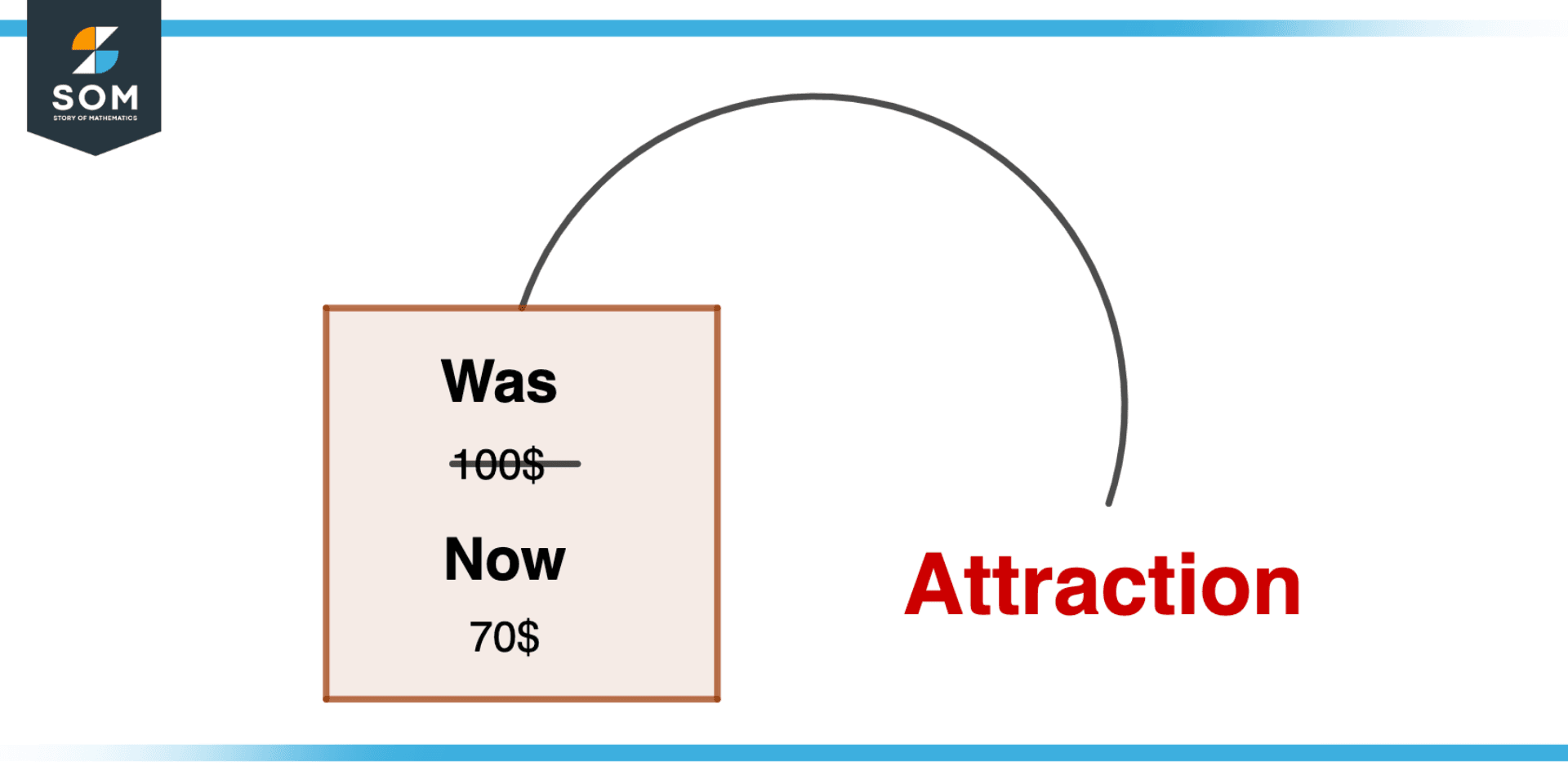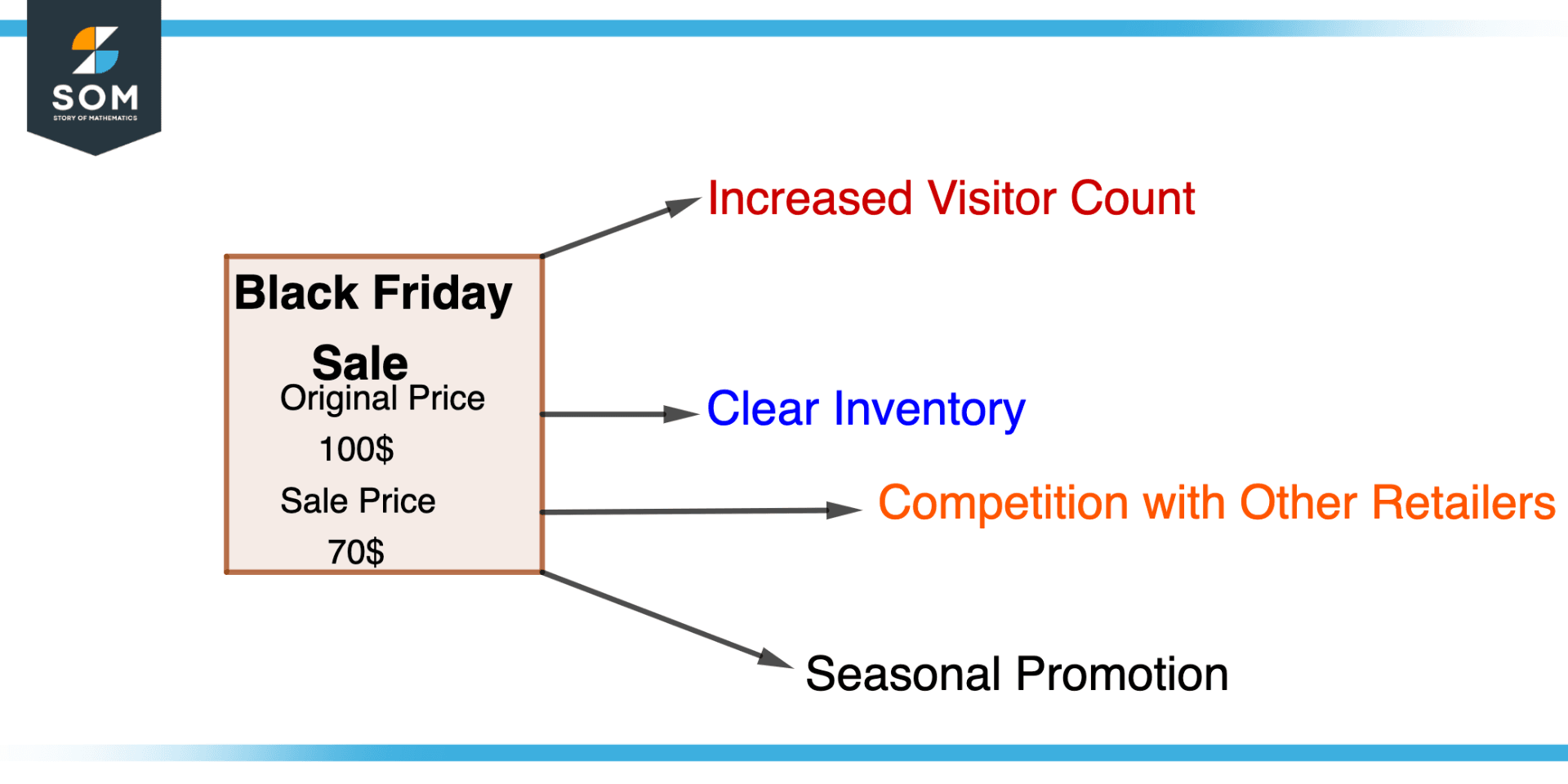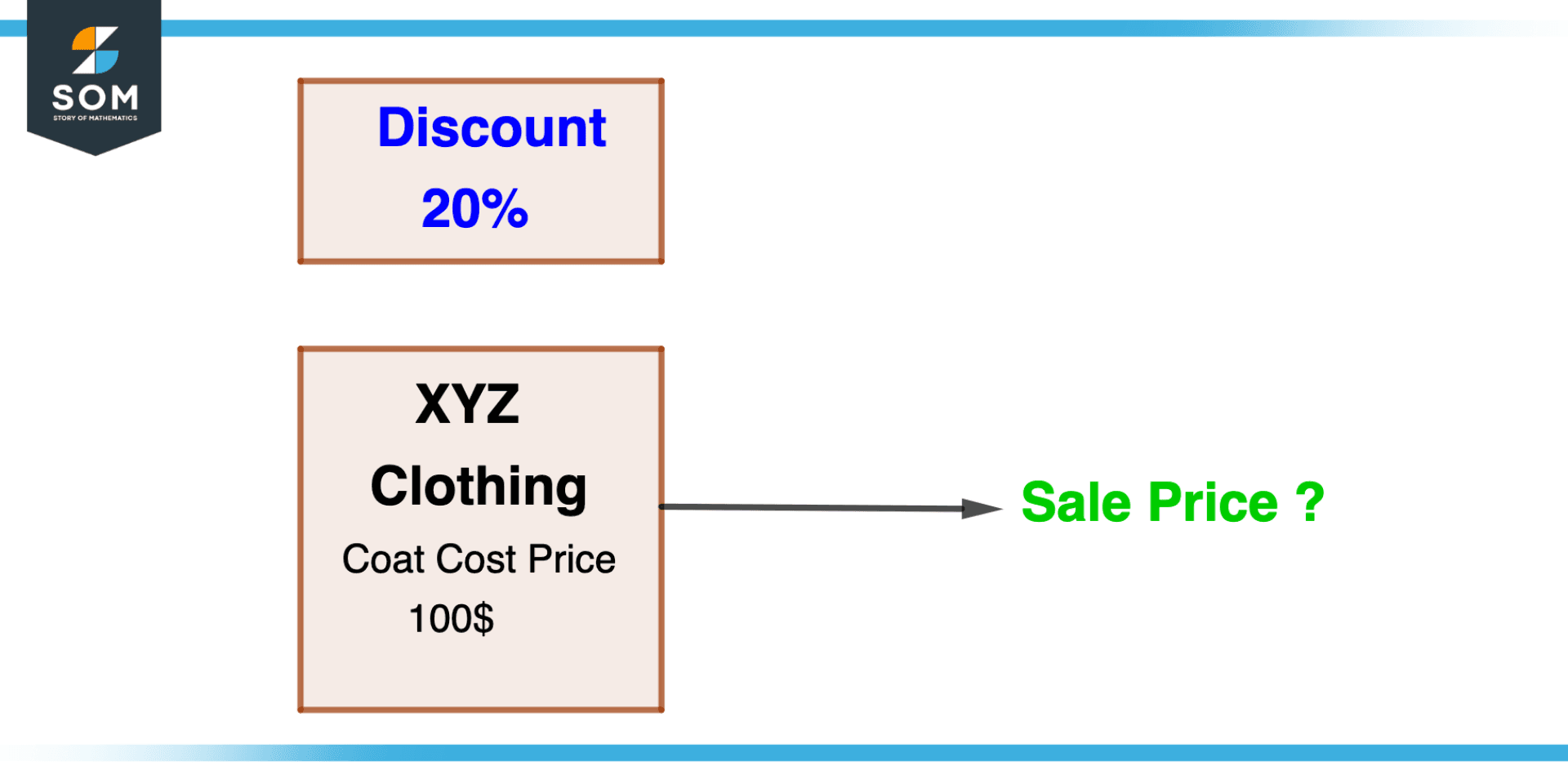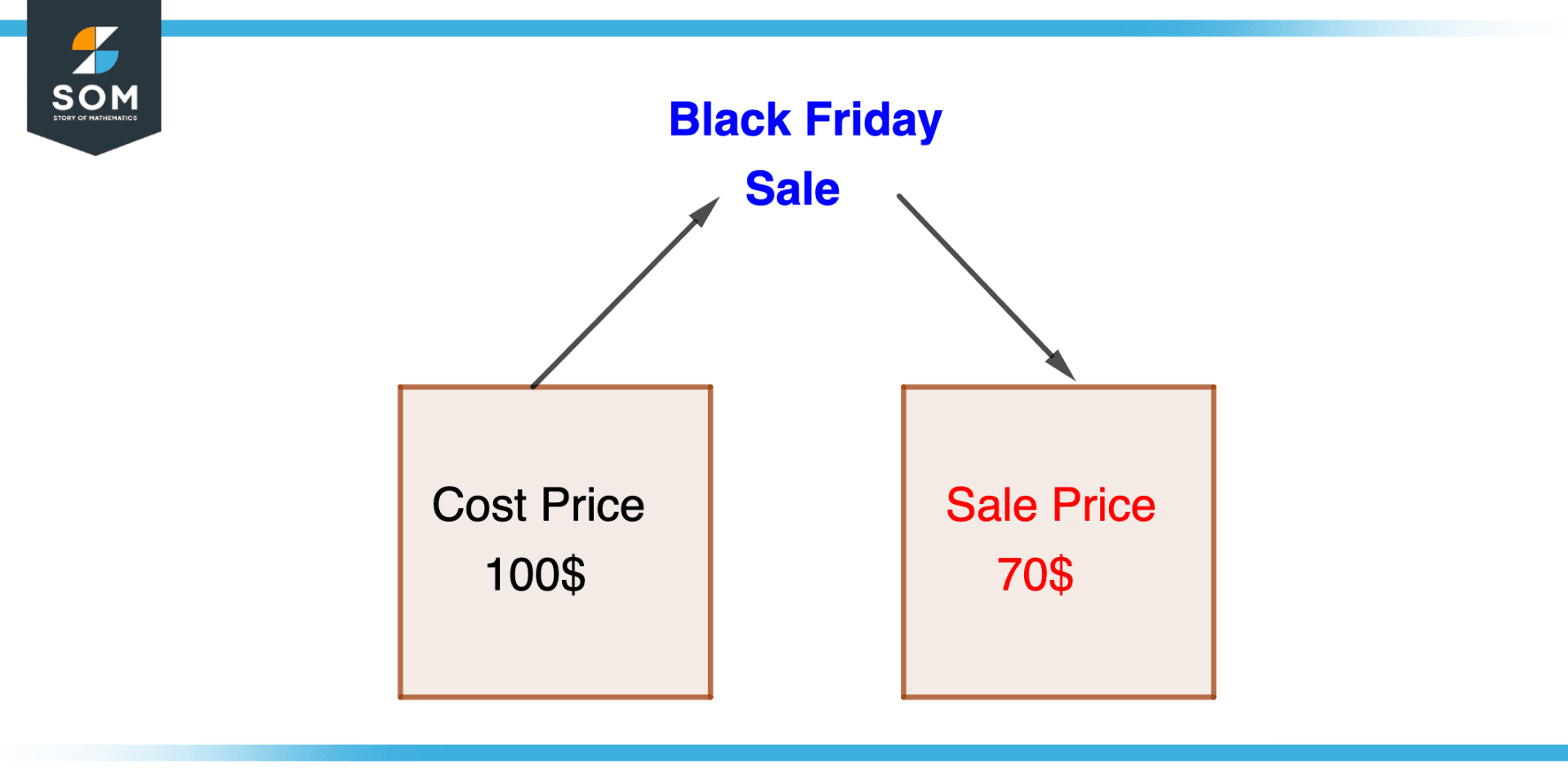JUMP TO TOPIC
Sale Price|Definition & Meaning
Definition
The sale price is the final price of a product after any and all deductions (discounts) from its original price. For example, if a restaurant offers a 10% discount to members, and a member orders \$12 dollars worth of food, the sale price, in this case, equals original cost – (discount rate x original cost) = 12 – 0.1 x 12 = 12 – 1.2 = \$10.8, saving \$1.2.
Attracting Customers: Another Word for Sale Price

Figure 1 – Sale price attracting customers
By offering a short-term discount from a product’s original price, sale prices draw customers. Consumers may save a lot of money as a result of this reduction, which increases the product’s appeal and purchase’s appeal. Additionally creating a sense of urgency, a sale’s temporary nature motivates customers to buy now before it’s too late.
Sale prices can also convey a sense of value to consumers, making them believe they are getting a good deal. Retailers can use sales as a marketing tool by advertising them and providing enticing discounts to entice clients into their establishments. Customers may be more inclined to buy when a lower price and the perceived value of a good deal are combined, which can boost sales for the retailer.
Additionally, promotions can make customers feel eager and anticipatory. This is especially true for end-of-season or clearance sales when customers are aware that they can find items at significant discounts. These sales can draw sizable crowds, resulting in a festive atmosphere that further tempts customers to buy.
Formula for Sale Price
The following is the formula for determining a sale price:
Sale Price = Normal Price – (Normal Price x Discount Percentage)
Where the normal Price is the item’s initial cost before any discounts are applied, and the percentage of the discount is expressed as a decimal (for example, 10% off is 0.1).
Motive Behind Offering a Certain Sale Price

Figure 2 – Agenda of Sale Price
Although there are many different motivations for offering a sale price, retailers frequently do so for the following reasons:
- Increased Visitor Count: Retailers may offer a sale price to draw more people into the store and boost sales. Customers may be encouraged to buy items during a sale who otherwise might not, which could increase the retailer’s profits.
- Clear Inventory: Retailers may use sales to get rid of outdated or slow–moving inventory. Retailers can entice customers to buy these items by temporarily lowering the price and freeing up space for new products.
- Compete with Other Retailers: Sales are another tool that retailers can use to compete with other retailers and draw customers. Retailers can attract customers away from rival stores by offering a more enticing deal by charging less than their rivals.
- Attract New Customers: Sales can be used by retailers to draw in new clients to their establishment. Retailers can encourage customers to make their first purchase and possibly develop a long–term relationship with them by providing a brief discount.
- Seasonal Promotions: Stores may run sales in conjunction with major occasions like Black Friday and Cyber Monday. They are able to draw clients who want to take advantage of sales and save money by doing this.
These are some of the many motivations for setting a certain sale price for a specific product.
Real Life Example

Figure 3 – Real Life example of sale price
Let’s say “XYZ,” a clothing retailer, wants to draw in more customers and boost sales during the holiday season. The retailer chooses to have 20% off a popular line of winter coats as part of a sale.
The coats are currently listed for \$100 each before the sale. The retailer subtracts the discount of 20% from the normal price of $100 to determine the sale price as follows:
Typical Cost = \$100
The percentage off is 20%.
Discount = 100 x 20% = 20.
Sale Price = 100 – 20 = \$80.
XYZ retailer sees a significant increase in sales as a result of the promotion, with many customers buying several coats at the sale price. The retailer also draws in new customers as a result of the sale, which could result in future repeat business.
Factors Affecting Sale Price
The factors that a sale price depends upon include:
- Cost of the item: Since retailers must turn a profit, the item’s cost plays a significant role in determining the sale price. To maintain profitability, the retailer might have to provide a smaller discount if the cost of the product is high.
- Market Competition: Retailers must take market competition into account when determining a sale price. The retailer might need to provide a discount if comparable products are being sold for less in order to stay competitive.
- Customer demand: A further crucial element in determining the sale price is customer demand. A retailer may be able to offer a smaller discount and still draw customers if there is a high demand for a product. If there is little demand, the retailer might need to provide a bigger discount to boost sales.
- Target customer demographic: The sale price may also be influenced by the target customer demographic. Retailers may provide various discounts to various customer groups, such as seniors, students, or participants in loyalty programs.
There may be several others as well, e.g., location (tourist spots are usually more expensive), and so on.
Sale Price vs. Cost Price

Figure 4 – Difference between sale price and cost price
The cost price, also referred to as the wholesale price, is what a retailer pays when acquiring a good from a supplier. Since the retailer must turn a profit, this price is typically higher than what the customer will pay.
Contrarily, the sale price is the total cost the customer pays for the item after any discounts or special offers have been taken into account. As the retailer is giving a discount to draw customers and boost sales, the sale price is typically lower than the cost price.
The profit the retailer makes on the sale of the product is the difference between the sale price and the cost price.
Solved Example Problems Involving Sale Prices
Example 1
Let’s say a restaurant charges \$25 for a steak dinner. The restaurant wants to give patrons a 20% discount during a weeknight special. Determine the sale price.
Solution
Sale price = Original Price – (Original price x Discount rate)
Sale price = 25 – (25 x 20%)
Sale price = 25 – 5
Sale Price = \$20
In this case, the steak dinner’s initial cost is \$25, and the discount is 20%. The restaurant can calculate the sale price of \$20 by deducting the discount of 5 from the original cost. Instead of the regular \$25 price, customers will pay \$20 for the steak dinner during the weeknight special.
Example 2
Let’s say a toy shop is offering a well-known action figure for \$30. The shop wants to give customers a 25% discount during the holiday season. Determine the sale price.
Solution
Sale Price = Original Price – (Original price x Discount rate)
Sale Price = 30 – (30 x 25%)
Sale Price = 30 – 7.50
Sale Price = \$22.50
In this case, the action figure’s initial cost is \$30, and the discount percentage is 25%. The shop can determine the sale price of \$22.50 by deducting the 7.50 discount from the original cost. During the holiday season, customers will pay \$22.50 rather than the action figure’s \$30 original cost.
All mathematical drawings and images were created with GeoGebra.
